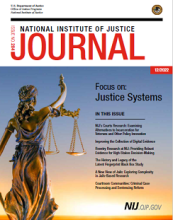Innovations in latent fingerprint analysis for forensic applications with matrix assisted laser desorption/ionization mass spectrometry imaging
Date Published
January 2020
Agencies
NIJ-Sponsored
Publication Type
Research (Applied/Empirical)



